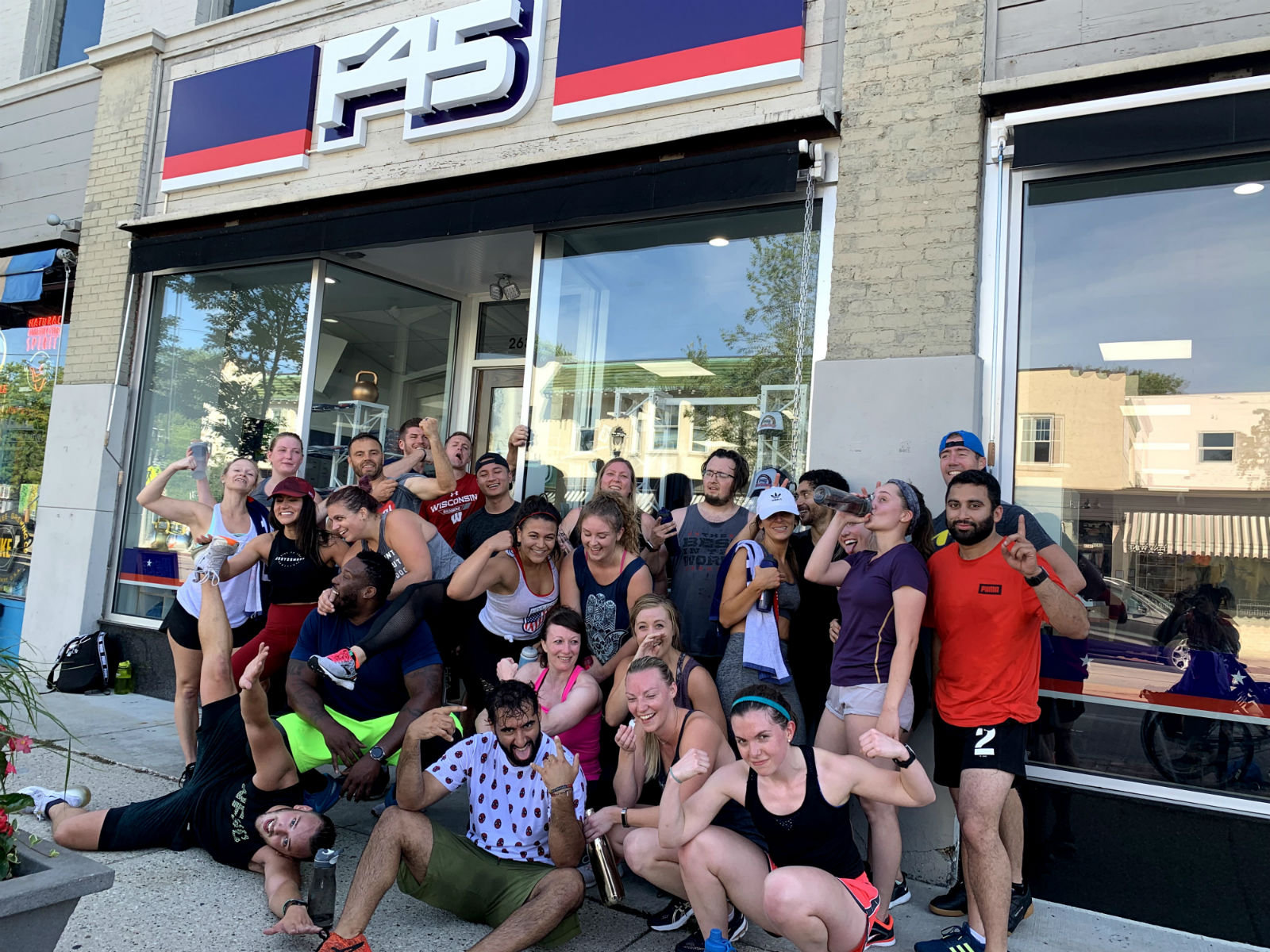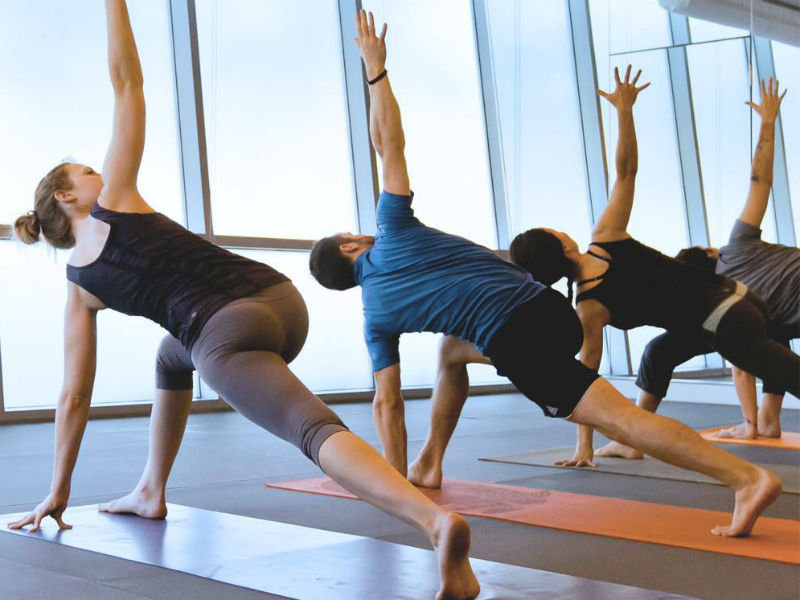Melissa Moore called me out last month after I posted a story warning about the dangers of CrossFit, the high-intensity workout program that combines Olympic-style weightlifting, gymnastics and traditional gym-class type exercises.
Specifically, it was the story by a professor of physical therapy who detailed how a few CrossFit athletes pushed themselves to a condition called rhabdomyolosis, where depleted muscles release toxic proteins that overwhelm the kidneys, resulting in renal failure and long-term muscle damage.
The story took off on the internet, and I took it as confirmation that CrossFit was indeed crazy.
Truth is, even though I’ve skied 10 Birkebeiners, run an ultramarathon and put myself in the hospital by pushing through the Horribly Hilly Hundreds, I had long been intimidated by CrossFit. In my uninformed view, it was over-muscled zealots hoisting massive amounts of weight, or overturning truck tires in garages turned into gyms.
Moore proved me wrong.
A petite, 26-year-old marathoner, she’s nothing like the ripped beasts I’ve watched carrying huge logs, climbing ropes and doing hand-stand walks in TV broadcasts of the CrossFit Championships.
And the workouts she challenged me to try at CrossFit 414 aren’t the soul-crushing exercises in pain I had imagined.
In a fundamentals class led by coach Jason Scuglik, we spent most of the hour learning the proper form for pull ups and the snatch – a quick lift of a barbell overhead from mid-thigh. Our workout of the day consisted of walking lunges, followed by sets of pushups and sit ups, as many rounds as possible in eight minutes.
It was hard, but not debilitating.
In a standard CrossFit session a few days later, we tackled five rounds of five split-jerks – pressing the bar overhead from the shoulders – and 10 pull ups. The fittest in the class finished in about five minutes. I knocked out the work in about 10.
The relatively short time working at high-intensity surprised me, but is one of the core principals of CrossFit, which was designed to build functional strength, aerobic capacity, power, speed, agility, coordination and balance.
At the extreme, CrossFit builds the capacity to carry heavy loads – rocks and logs – over long distances. On a moderate level, it helps build strength to carry your luggage to the rental car.
The heavy lifting portion of the sessions are much like interval training for runners, forcing the body to work in an anaerobic state in short bursts.
"I get that intensity I wasn’t getting running eight to 10 miles," said Moore, a former collegiate runner from Georgia now pursuing a master’s degree at the University of Wisconsin–Milwaukee. "I was surprised. After eight to 10 minutes, I was exhausted; long run exhausted."
Like me, Moore was skeptical about CrossFit. Her husband signed up with the 414 gym after the studio opened at 1857 E. Kenilworth Pl., in September 2012. Moore had no interest in the weight lifting and pull ups and jumping that he embraced.
"I thought it would be horrible," she said.
"Over my dead body would I do that," she remembered thinking. "I’d so much rather run 20 miles."
But her husband, Alan, lost 25 pounds in a few months and his results and enthusiasm convinced her to join.
She started in January, with two workouts a week, increased that to three and now four.
"I love the lifting, the Olympic lifting," Moore said. "I wish I could do clean and snatch all day, which is a big surprise."
The controversy: CrossFit has grown exponentially since Greg Glassman, an iconoclastic personal trainer, launched the business in California in 2004. It has grown from a single studio – or "box" in CrossFit terminology – to roughly 7,000 affiliates, including two-dozen in the Milwaukee area. CrossFit classes are now offered in more traditional training studios, area colleges and MPS' MacDowell Montessori School.
While wildly popular, it remains a target of skeptics and critics, who write about injuries and the dangers of rhabdomyolosis. Glassman helps provide ammunition to the detractors by responding with a "screw you" attitude and clinging to early promotional characters of a puking clown and an "Uncle Rhabdo."
The limited training required for coaches and affiliate operators also raises legitimate doubts. A coach can receive a level one certification and open a "box" after a weekend seminar.
Olympic-style lifting and extreme exercises – pulling weighted sleds or toppling large tires – can easily lead to injury when done incorrectly.
There’s also a cult-like atmosphere. CrossFit has something of its own language of WODS (Workout of the Day), thrusters, bar muscle ups and HSPUs (hand-stand pushups). Passionate followers fill online message boards with boasts of personal bests, goals that seem superhuman and workouts that leave them curled in the fetal position.
Kinder and gentler: "The intensity and difficulty of CrossFit is what you make of it," said Michael Adducci, who works out at the Kenilworth location.
That assessment was repeated by several others who shared their experiences.
"I’m pretty type A and competitive and I never feel that I’m being encouraged to push myself to the point of injury," said Amanda Kindig, 27. "The coaches (Jason Scuglic and Marcus Wallace) do a great job of helping you scale the workouts to your ability level, and encourage give your best."
The term scaling refers to the modifications that can be made in an exercise to accommodate the strength and fitness levels of the participants. A newcomer will use assists to do pull ups, or minimal weights on the barbells. CrossFit 414 also encourages beginners to work through a half-dozen fundamentals sessions before tackling a full workout.
In my fundamentals session, most of our initial work was done with a small section of PVC piping. In the regular workout, Wallace moved around the room correcting the form used by the dozen participants.
The challenge was personal, not imposed.
"There are progressions for everything," said Ryan Atkins, who opened the first CrossFit affiliate in Wisconsin and now operates CrossFit Milwaukee.
"You have to ask yourself, are you making money off this workout, is your life depending on this workout?" he said. "If the answer is ‘no,’ then err on the side of caution.
Atkins advises people to talk to the gym owner and observe the workouts to find the right fit for them.
"Having a good baseline level of fitness is obviously a huge advantage for a beginner, however that certainly shouldn’t preclude anyone from giving CrossFit a try," said Adducci, 33, and a Tough Mudder veteran.
The community: Along with her affinity for the clean and jerk, Moore found the community within CrossFit to be a pleasant surprise. She’s made friends with the people who grunt and lunge and pull alongside her; good friends, the kind of friends who drive her to a doctor’s appointment or help out with home repairs.
Kindig had a similar comment: "It’s great to be in a community of people who care about their fitness, and if I want to push myself to try and keep up with someone better than me, I can. If I want to beat my previous time or weight I can do that too."
Memories of running cross-country for the Slinger Owls motivated Tom Held to get his body moving again when he turned 30. Almost two decades later, he's still on the move. The 49-year-old bikes, runs and skis, and covers news for similarly active people as a freelance writer and blogger.
He spent 26 years as a daily news reporter, and applies that experience to dig out stories about athletes, races, endurance sports, fitness and self-propelled transportation. His work has appeared in Silent Sports Magazine, Wisconsin Trails and Cross-Country Skier.
Held lives in the Bay View neighborhood, where he counts being Dad to twin daughters part of his daily workout.







